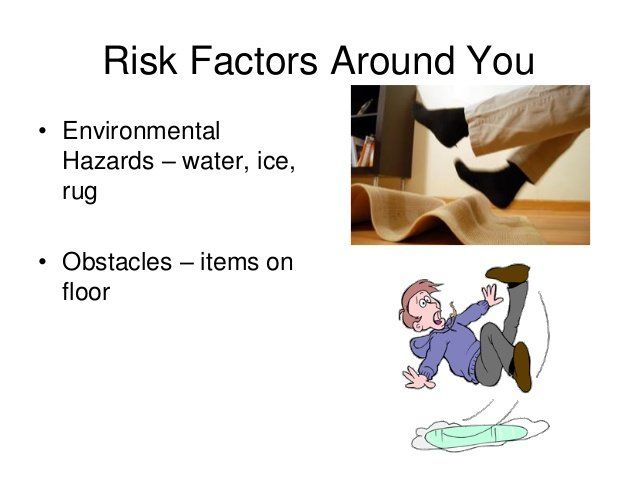E D U C A T I O N
RISK OF FALLING
R I S K O F F A L L I N G
Diabetes and Preventing Falls: Care Instructions
Your Care Instructions
If you are an older adult who has diabetes, you may have a higher risk of falling. Complications of diabetes—such as nerve damage, foot problems, and reduced vision—may increase your risk of a fall. Some of your medicines also may add to your risk.
By making your home safer, you can lower your risk of falling. Doing things to prevent diabetes complications may also help to lower your risk.
You can make your home safer with a few simple measures. Follow-up care is a key part of your treatment and safety. Be sure to make and go to all appointments, and call your doctor if you are having problems. It's also a good idea to know your test results and keep a list of the medicines you take.
How can you care for yourself at home?
Taking care of yourself
- Keep your blood sugar at a target level (which you set with your doctor). Exercise regularly to improve your strength, muscle tone, and balance. Walk if you can. Swimming may be a good choice if you cannot walk easily.
- Have your vision checked as often as your doctor recommends. It is usually once a year or more often if you have eye problems.
- Know the side effects of the medicines you take. Ask your doctor or pharmacist whether the medicines you take can affect your balance. Sleeping pills or sedatives can affect your balance.
- Limit the amount of alcohol you drink. Alcohol can impair your balance and other senses. Have your doctor check your feet during each visit. If you have a foot problem, see your doctor.
Preventing falls at home
- Remove raised doorway thresholds, throw rugs, and clutter. Repair loose carpet or raised areas in the floor.
- Move furniture and electrical cords to keep them out of walking paths.
- Use nonskid floor wax, and wipe up spills right away, especially on ceramic tile floors.
- If you use a walker or cane, put rubber tips on it. If you use crutches, clean the bottoms of them regularly with an abrasive pad, such as steel wool.
- Keep your house well lit, especially stairways, porches, and outside walkways. Use night-lights in areas such as hallways and bathrooms. Add extra light switches or use remote switches (such as switches that go on or off when you clap your hands) to make it easier to turn lights on if you have to get up during the night. Install sturdy handrails on stairways. Put grab bars near your shower, bathtub, and toilet.
- Store household items on low shelves so that you do not have to climb or reach high. Or use a reaching device that you can get at a medical supply store. If you have to climb for something, use a step stool with handrails, or ask someone to get it for you.
- Keep a cordless phone and a flashlight with new batteries by your bed. If possible, put a phone in each of the main rooms of your house, or carry a cell phone in case you fall and cannot reach a phone. Or you can wear a device around your neck or wrist. You push a button that sends a signal for help. Wear low-heeled shoes that fit well and give your feet good support. Use footwear with nonskid soles. Check the heels and soles of your shoes for wear. Repair or replace worn heels or soles.
Do not wear socks without shoes on wood floors.
Walk on the grass when the sidewalks are slippery. If you live in an area that gets snow and ice in the winter, sprinkle salt on slippery steps and sidewalks.
LEARN MORE
Care instructions adapted under license by Alliance In Health Diabetes Control Center. This care instruction is for use with your licensed healthcare professional. If you have questions about a medical condition or this instruction, always ask your healthcare professional. Healthwise, Incorporated disclaims any warranty or liability for your use of this information.



